▼ Climate change programme to study Himalayan birds [01-31-17]
 The Bombay Natural History Society has launched a climate change programme. Under this, a study has been funded by Oracle and CAF-India to assess the state of Central Himalayan birds. The Bombay Natural History Society has launched a climate change programme. Under this, a study has been funded by Oracle and CAF-India to assess the state of Central Himalayan birds.
The programme will assess the status as well distribution and conservation of pheasants and finches in Central Himalayas.
Himalayas hold a rich natural heritage with biodiversity. The study will focus on conservation with the aid of community participation.
The Indian subcontinent is home to 50 species of pheasants and 62 species of finches. Several species have been listed in Globally Threatened category by IUCN.
Both these groups are spread across the Himalayas. Shrinking habitats have been combined with many biotic factors, along with trapping and poaching pressures pushing the species to extinction.
Climate change can influence vertical and horizontal distribution of groups. This makes boundaries of protected areas fuzzy.
Species may adapt to survive but those sensitive to the temperature will suffer following climate change.
Long term monitoring project also assesses the socio-economic activities of local communities and involve them in the conservation effort. The aim is to sensitize the local forest department staff.
The aim is to understand the impact of climate change on biodiversity of the Himalayas.
To conserve biodiversity, local communities play a critical role and their involvement is critical for project success.
Project will contribute to make the inventory of pheasants and finches. Documentation of local specific conservation issues is essential.
Species specific conservation action plan will also be formulated.
BNHS: Know More
- The Bombay Natural History Society, founded on 15 September 1883.
- It is one of the largest NGOs in India engaged in conservation and biodiversity research.
- It supports many research efforts through grants.
- It also publishes the Journal of the Bombay Natural History Society.
- Many prominent naturalists, including the ornithologists Sálim Ali and S. Dillon Ripley, are part of BNHS.
- BNHS is the partner of BirdLife International in India.
- It has been designated as a 'Scientific and Industrial Research Organisation' by the Department of Science and Technology.
|
▼ India's NAPCC action plan to get 3 new missions [01-27-17]
 India’s 8-point National Action Plan on Assessment, Adaptation and Mitigation of Climate Change (NAPCC) to fight climate change will soon get three new missions. India’s 8-point National Action Plan on Assessment, Adaptation and Mitigation of Climate Change (NAPCC) to fight climate change will soon get three new missions.
They are missions on health, coastal zones and waste-to-energy.
These will be added to address the impact of climate change on health, coastal zones and waste-to-energy.
Since 2012, the Prime Minister’s Council on Climate Change India has instituted a NAPCC that has specified eight national missions.
These include:
- National Mission on Strategic Knowledge for Climate Change
- National Mission for Sustainable Agriculture
- National Mission on Enhanced Energy Efficiency
- National Mission for Sustaining Himalayan Ecosystem
- National Mission on Sustainable Habitat
- National Solar Mission
- Green India Mission
- National Water Mission
|
▼ France issues green bonds for the first time [01-27-17]
 France has issued its first “green bonds” with record USD 7.5 billion or 7 billion euro sale. France has issued its first “green bonds” with record USD 7.5 billion or 7 billion euro sale.
This has marked the way for establishing a genuine market in renewable energy bonds.
Money from the sale of the 22 year bonds will finance projects for addressing climate change.
Credit Agricole CIB was one of many banks handling the placement of these bonds with institutional investors.
This marks a historic event for the bonds market on account of the size and long period of loan maturity.
Move also proves France has a credible, robust framework to implement the Paris Agreement on climate change.
Bond coupons were set at 1.75 percent. This marks an interest rate comparable to conventional borrowing on the same time frame.
Issue also shows France is able to finance expenditure on green projects at the same price as traditional borrowing.
The initiative was announced in April 2016 by President Francois Hollande. He championed his country's role as a leader in energy transition.
The first country to enter the green bond market was Poland with a 750 million euro issue in December 2016.
Before this, green bonds had been issued by companies or finance institutions like World Bank.
On account of its size and maturity, the French transaction marks the entry of states into the green bonds market.
France has also become the first country to issue a sovereign green benchmark bond.
Issue was reserved for institutional investors such as banks and pension funds.
It was oversubscribed with total demand exceeding 23 billion euros.
Meanwhile the European Environment Agency has said the continent is facing rising sea levels and extreme weather due to climate change.
Copenhagen-based agency indicated assessments are on the latest trends and projections on climate change and impact across the EU.
EU body also said that the climate change will impact ecosystems, economy and human health.
European Environment Agency: Know More
- Formed: 30 October 1993
- Jurisdiction: European Union
- Headquarters: Copenhagen, Denmark
- Executive Director: Hans Bruyninckx
- Management Chairperson: Elisabeth Freytag-Rigler
- Website: www.eea.europa.eu
|
▼ Union Government approves ratification of Kyoto Protocol [01-25-17]
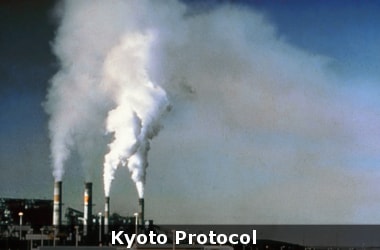 Union Cabinet on 24th Jan 2017 approves the ratification of the second commitment period of the 1997 Kyoto Protocol for 2013-2020. Union Cabinet on 24th Jan 2017 approves the ratification of the second commitment period of the 1997 Kyoto Protocol for 2013-2020.
This protocol contains emission of GHGs. The Kyoto Protocol became operational in 2005.
As per the protocol, only developed nations are mandatorily required to undertake mitigation (emission cuts) targets.
They also have to provide financial resources and transfer of technology to the developing nations.
The first commitment period of the KP was 2005-12.
Its second commitment period was adopted in 2012.
Ratification of the Kyoto Protocol by India will encourage other developing countries also to undertake this exercise.
Clean Development Mechanism (CDM) projects under the KP's second commitment period will attract some investments in India as well.
The KP was adopted in 1997.
It recognised that the developed countries are principally responsible for the current high levels of Greenhouse Gas (GHGs).
Developing countries have no mandatory mitigation obligations or targets under the Kyoto Protocol.
In December, 2015, nations adopted another agreement in Paris which is meant for being operationalised post-2020 (end of the KP's second commitment period).
Paris Agreement mandates all countries to take action to minimise the impact of climate change.
This is as per their voluntary commitments and individual capacity.
For the period 2013-2020, the protocol was adopted in Doha in 2012.
India has always emphasized the importance of climate actions by developed country Parties in the pre-2020 period.
It has also upheld Equity and Common but differentiated responsibilities and respective capabilities (CBDR & RC)
Though amendment to its second commitment period (2013-2020) was adopted in 2012, only 75 countries have, so far, ratified it.
A total of 144 countries are required to ratify the amendment for bringing it into force.
Kyoto Protocol: Know More
- Signed: 11 December 1997
- Location: Kyoto, Japan
- Effective: 16 February 2005
- Condition: Ratification by at least 55 States to the Convention
- Signatories: 83
- Parties: 192
|
▼ Only 2 of 10 most polluted cities in India have real time air quality monitoring [01-20-17]
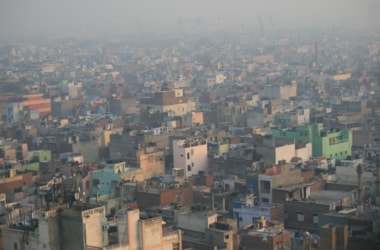 Only 2 of 10 most polluted cities are covered by government's real time air quality monitoring system. Only 2 of 10 most polluted cities are covered by government's real time air quality monitoring system.
Delhi and Faridabad are covered by the system.
More than one billion are unprepared for toxic episodes.
The country's air is now deadlier than China. Lack of real time monitoring ensures that current pollution levels cannot be checked.
Moreover, the government is unable to issue public warnings.
Around 88 million Indians or 7 percent of the population live in 33 cities that have online air pollution monitoring in real time.
Less than 10 percent of India's 380 urban agglomerations are covered.
The GoI runs monitoring networks covering more than 200 cities and towns. Measurements are not taken more than twice in a week and not available in real time.
Manual monitoring system means samples should be first sent to the lab to be assessed.
Government in China has built a particle pollution monitoring network covering 400 cities and including 1,500 monitoring stations, all posting data online in real time.
All of the Indian cities in the top 10 are experiencing levels of the particulate PM10 three-and-a-half times the annual legal limit.
It is also 10 times above international guidelines,.
4 of the top 10 most polluted cities are found in Jharkhand where there are coal mines.
Not a single city in northern India met international safety guidelines for particle pollution in 2015.
Less than 10% cities met India's national air quality standards, which are 3 times as high as the WHO safety guideline.
Moreover, coal consumption almost doubled and oil consumption increased 60 per cent from 2005 to 2015.
Emissions from coal-based power plants were the largest source of increase in SO2 and NOx emissions in the country.
These are two key pollutants contributing to India's particle pollution levels.
TERI and CSE have started calling for a national action plan on air pollution to expand measures to reduce emissions from key polluting sectors–power plants, industry, agriculture and transport– beyond individual cities.
National crisis has caused new emission standards and the launch of the National Air Quality Index.
National Air Quality Index: Know More
- Air Quality Index (AQI) gives air quality information to people.
- There are six AQI categories, namely Good, Satisfactory, Moderately polluted, Poor, Very Poor, and Severe.
- The proposed AQI will consider eight pollutants (PM10, PM2.5, NO2, SO2, CO, O3, NH3, and Pb.
- For this short-term (up to 24-hourly averaging period) National Ambient Air Quality Standards are prescribed.
- Based on the measured ambient concentrations, corresponding standards and likely health impact, a sub-index is calculated for each of these pollutants.
- The worst sub-index reflects overall AQI.
|
▼ Now, a solar powered bike to combat air pollution [01-20-17]
 This bicycle may be a low-cost, eco-friendly alternative to 2 wheeler motor vehicles. To reduce air pollution, scientists have designed the solar powered bike. This bicycle may be a low-cost, eco-friendly alternative to 2 wheeler motor vehicles. To reduce air pollution, scientists have designed the solar powered bike.
Bikes can switch between solar energy powered motor and pedals. Cost is pegged around INR 12 to 15,000.
India is the sixth largest motor vehicle manufacturer in 2014-2015, producing 23.4 million vehicles during that period.
2 wheeler production reached 18.5 million units in 2015. The vehicles have doubled in number in the past 20 years and have become a massive source of air pollution in urban India.
Major air pollutants emitted from vehicles include CO, nitrogen oxide and particulate matter.
Increasing air pollution has serious health effects, estimates pointing to 10 percent deaths per year from this.
Solar assisted bikes can reduce overall 60 percent of the vehicle pollution in the country. This comprises a brushless DC motor.
There is an electric throttle for speed control. The solar energy is stored by a lead acid battery.
The solar panel is mounted on a bicycle carrier and solar panels of any specification are used based on which energy is released.
With power supply from the solar panel to the hub motor, the wheels rotate and move. The rider can choose between pedals and motor or opt for both together.
Bicycle speed and other features can be customized to suit user needs.
|
▼ Neopalpa donaldtrumpi, the moth named after Donald Trump! [01-20-17]
 Scientists have officially named a new endangered species of moth as Neopalpa donaldtrumpi. Scientists have officially named a new endangered species of moth as Neopalpa donaldtrumpi.
It is found in parts of Southern California and Baja, Mexico.
It is named US president-elect Donald Trump.
The adult of the new discovered species stands out with yellowish-white scales on the head showing an amusing resemblance to Donald Trump’s hairstyle.
This was thus justifying scientists name for it.
|
▼ Delhi faces massive pollution: EPCA to enforce graded response plan [01-17-17]
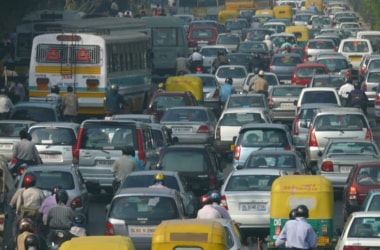 A host of emergency measures such as odd-even will kick off if pollution levels touch emergency proportions. A host of emergency measures such as odd-even will kick off if pollution levels touch emergency proportions.
Centre has asked the SC appointed Environmental Pollution Control and Prevention Authority to enforce a graded response plan.
Pollution in Delhi-NCR has prompted the MoEF to assign the task to implement the plan to the EPCA under Environment Protection Act 1986.
As per sub-section (1) of section 3 of the Environment (Protection) Act, 1986 (29 of 1986), the Central government hereby assigns the task of implementation of the Graded Response Action Plan.
Comprehensive plan has been prepared by the Central Pollution Control Board that submitted the report to the SC on Dec 2, 2016.
SC has accepted and asked the centre to notify the same.
Emergency measures such as odd-even car rationing and ban on construction activities will be enforced if the city PM 2.5 level breaches 300 mcg per cubic metre and PM 10 levels stay above 500 mcg per cubic metre for two consecutive days.
Prescribed standards of PM 2.5 and PM 10 are 60 and 100 mcg per cubic metre respectively.
Plan also recommends that during very poor air quality, diesel generators should be banned and parking free raised by 3-4 times.
Plan also said other measures include closing brick kilns, hot mix plants, stone crushers, intensifying public transport services and increase in mechanised cleaning of roads and sprinkling of water.
High levels of air pollution in Delhi-NCR have raised serious concerns and health problems.
Know More: CPCB
- Formed: 22 September 1974
- Employees: 500
- Annual budget: ₹400 million (US$5.9 million)
- Chairman: Sh. S.P. Singh Parihar, IAS
- Member Secretary: Dr. A.B. Akolkar
- Website: www.cpcb.nic.in
|
▼ Aditya: India's first solar powered boat launched in Kochi [01-16-17]
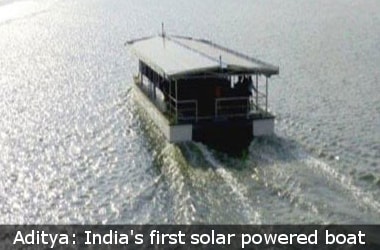 India’s first solar powered boat called ‘Aditya’ was launched at Kochi’s Vembanad lake in Kerala. India’s first solar powered boat called ‘Aditya’ was launched at Kochi’s Vembanad lake in Kerala.
The boat is a 75 seater. It has 78 rooftop solar panels and is 20m in length. It is 7m wide.
The boat will offer ferry service along a 2.5 km route between Vaikom and Thavanakkadavu, 22 times a day.
It can travel at maximal speed of 14 kmph and cruises without noise and minimal vibration unlike diesel ferries.
Boat was manufactured at ship technology department of Cochin University of Science and Technology called CUSAT.
|
▼ In Praise of Air: World's first air cleansing poem! [01-16-17]
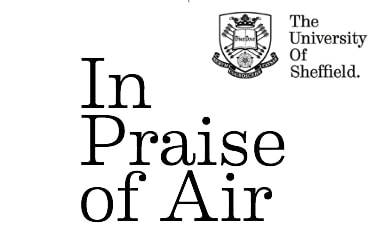 A groundbreaking air cleansing poem called “In Praise of Air” has removed more than 2 tonnes of pollution from the environment in the UK. A groundbreaking air cleansing poem called “In Praise of Air” has removed more than 2 tonnes of pollution from the environment in the UK.
This is part of the project used to fight pollution in cities across the globe. The poem is the world's first air cleansing poem.
It was produced by scientists and writers at UK's University of Sheffield.
The poem has been written by award winning writer Simon Armitrage, also professor of poetry at the University.
The poem has been printed on specially treated material developed by scientists at the University. It purifies its surroundings through catalytic oxidation.
The poem has been on display In the University of Sheffield's Alfred Denny Building. The project team has estimated the poem has removed two tonnes of NO2 from the surrounding environment.
The scientists are now looking to replicate the air cleansing technology in billboards and artwork to tackle pollution.
Pollution is a major issue for urban centers and technologies such as these can raise awareness and encourage pro-environmental behaviours.
Since 2014, this poem has been on exhibition. The paper on which the poem is printed can mitigate pollution, cut disease and help save lives.
Global Environment Policy Initiative Paris Agreement: Know More
- Drafted: 30 November – 12 December 2015
- Signed: 22 April 2016
- Location: New York
- Sealed: 12 December 2015
- Effective: 4 November 2016
- Condition: Ratification/Accession by 55 UNFCCC Parties, accounting for 55 percent of global greenhouse gas emissions.
- Signatories: 194
- Parties: 125
- Depositary: Secretary-General of the United Nations
- Languages: Arabic, Chinese, English, French, Russian and Spanish
|
▼ New gibbon species in China named after Star Wars character [01-13-17]
 Scientists have discovered a new species of gibbon living in south-west China’s rainforests. Scientists have discovered a new species of gibbon living in south-west China’s rainforests.
It has been named the Skywalker Hoolock Gibbon by its discoverers, who are Star Wars fans.
The name is also a nod to the fact that the Chinese characters Hoolock tianxing, mean “Heaven’s movement.”
The research team, led by Fan Peng-Fei from Sun Yat-sen University in China, first suspected that the gibbons they were studying in Gaoligongshan nature reserve were different. They lacked typical facial markings of white eyebrows and beards.
Gibbons are renowned for their loud song, which they use to mark territory, and this also sounded unusual.
The scientists estimate that about 200 Skywalker gibbons are living in China and also potentially in neighbouring Myanmar, but say that the species should already be classified as endangered.
Habitat loss and fragmentation is putting the gibbons at risk of extinction.
|
▼ Now, biodegradable bullets with special seeds that grow into plants! [01-13-17]
 The US Army is planning to use biodegradable bullets loaded with special seeds that sprout into plants eliminating ammunition debris and contaminants, reducing soil pollution in training grounds. The US Army is planning to use biodegradable bullets loaded with special seeds that sprout into plants eliminating ammunition debris and contaminants, reducing soil pollution in training grounds.
Spent shells litter training facilities across the world. Shells contain metals and other chemicals which can rust and pollute groundwater and soils.
US Department of Defense are soliciting proposals for biodegradable bullets loaded with seeds to grow environmentally beneficial plants.
These eliminate ammunition debris and contaminants. The US Army has developed and tested the seeds which can be embedded into biodegradable composite.
These seeds have been bioengineered to germinate only after they have been in the ground for several months.
Plants that grow from these seeds could also remove soil contaminants and feed local wildlife.
|
▼ Massive ice block to break away in Antarctic Ice Shelf [01-9-17]
 A massive ice block nearly 100 times the area of Manhattan is poised to break off Antarctica's Larsen C ice shelf, scientists reported on 6th Jan 2017. A massive ice block nearly 100 times the area of Manhattan is poised to break off Antarctica's Larsen C ice shelf, scientists reported on 6th Jan 2017.
A slow-progressing rift suddenly grew by 18 kilometres (11 miles) at the end of December, leaving the finger-shaped chunk- 350 metres thick- connected along only a small fraction of its length.
The rift has also widened, from less than 50 metres (160 feet) in 2011 to nearly 500 metres in Jan 2017.
The real danger is from inland glaciers, held in place by the floating, cliff-like ice shelves that straddle land and sea. The fragile West Antarctic ice sheet - where Larsen C is located - holds enough frozen water to raise global oceans by at least four metres (13 feet).
Recent studies have suggested that climate change may already have condemned large chunks of it to disintegration, though whether on a time scale of centuries or millennia is not known.
The breaking off, or calving, of ice shelves is a natural process, but global warming is thought to have accelerated the process.
Warming ocean water erodes their underbelly, while rising air temperatures weaken them from above. The nearby Larsen A ice shelf collapsed in 1995, and Larsen B dramatically broke up seven years later.
The ice block currently separating from Larsen C contains about 10 percent of its mass, and would be among the 10 largest break-offs ever recorded.
If all the ice held back by Larsen C entered the sea, it would lift global oceans by about 10 centimetres (four inches).
Oceans in recent decades have absorbed much of the excess heat generated by climate change, which has lifted average global air temperatures by one degree Celsius (1.8 degrees Fahrenheit).
Paris agreement
- The world's nations have undertaken in the Paris Agreement.
- It was inked in the French capital in December 2015.
- It aims to to cap global warming at "well under" two degrees Celsius (3.5 degrees Fahrenheit) above pre-industrial era levels.
|
▼ Centre approves Ganga rejuvenation projects at INR 370 crore [01-3-17]
 Government of India has approved new projects at cost of INR 370 crores for the ongoing Ganga rejuvenation programme in Haridwar and Varanasi. Government of India has approved new projects at cost of INR 370 crores for the ongoing Ganga rejuvenation programme in Haridwar and Varanasi.
The Centre also decided to include six more towns/ cities under the surface cleaning exercise of the river using trash skimmers.
Surface cleaning of the river Ganga in the cities - Rishikesh, Haridwar, Garh Mukhteshwar, Sahibganj, Kolkata and Navdweep - will begin in Jan 2017.
Urban local bodies will be the nodal agency to monitor this work, approved by the National Mission for Clean Ganga (NMCG).
The number of cities to be covered under the river surface cleaning plan has now reached 12.
The 'Namami Gange' programme was launched as a mission to achieve the target of cleaning river Ganga in an effective manner by involving all stakeholders, especially five major Ganga basin states i.e. Uttarakhand, Uttar Pradesh, Jharkhand, Bihar and West Bengal.
The programme envisages river surface cleaning, STP infrastructure, river front development, bio-diversity, afforestation and public awareness. The new projects, approved by the NMCG for Haridwar, include setting up 68 million litres per day (MLD) sewage treatment plant (STP) in Jagjeetpur and 14 MLD STP in Sarai at an indicative cost of INR 110.30 crore and INR 25 crore, respectively, under Hybrid Annuity based PPP mode.
|
▼ China bans ivory trade [01-2-17]
 China has announced a ban on all ivory trade and processing activities by the end of 2017. China has announced a ban on all ivory trade and processing activities by the end of 2017.
The move follows a resolution at the Convention on International Trade in Endangered Species (CITES) in South Africa in October 2016 that was backed by China.
This decision is consider historic and a game-changer for the future of elephants.
China has the biggest ivory market in the world- some estimates suggest 70% of the world’s trade ends up there.
CITES is multilateral treaty between governments to protect endangered animals and plants. Its aim is to ensure that international trade in specimens of wild animals and plants does not threaten their survival.
China had previously announced it planned to shut down the commercial trade, which conservationists described as significant because China's vast, increasingly affluent consumer market drives much of the elephant poaching across Africa.
China, which has supported an ivory-carving industry as part of its cultural heritage, said carvers will be encouraged to change their activities and work, for example, in the restoration of artifacts for museums. More efforts will be made to stop the illegal trade, the statement said.
Chinese trade in ivory
- China has allowed trade in ivory acquired before a 1989 ban on the ivory trade by the Convention on International Trade in Endangered Species of Wild Fauna and Flora.
- It seeks to regulate the multi-billion-dollar trade in wild animals and plants.
- China also permits trade from a one-time CITES-approved purchase by China and Japan of an ivory stockpile from several African countries in 2008.
- The number of Africa's savannah elephants dropped by about 30 per cent from 2007 to 2014, to 352,000, because of poaching, according to a study published this year.
- Forest elephants, which are more difficult to count, are also under severe threat.
|
▼ MP to develop climate smart villages [01-2-17]
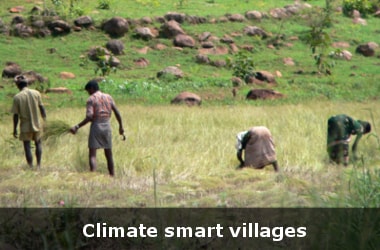 MP has started an ambitious plan to develop 1,100 climate smart villages with the aim to enable farmers to manage climate change risks and ensure good productivity. MP has started an ambitious plan to develop 1,100 climate smart villages with the aim to enable farmers to manage climate change risks and ensure good productivity.
The villages will be developed over a course of the next 6 years.
100 villages in each of the 11 agro climatic zones of the state will be taken up under the National Agriculture Development Programme and the Indian National Mission on Sustainable Agriculture.
The plan, which would incur a cost about Rs 150 crore every year, will encourage farmers to go for short duration variety of crops, in addition to using drought-resistance seeds.
Focus will be on integrated agriculture which comprises animal husbandry, fisheries and traditional farming.
Agro-forestry will also be adopted in these villages.
This will help in water retention and prevent soil erosion.
Integrated nutrients management would also be implemented to help in soil fertility and plant nutrients supply through optimisation of all possible sources of organic, inorganic and biological components.
In addition, the integrated pest management, zero tillage, raised bed gardening techniques and micro-irrigation would also be introduced in the climate smart villages. This would help farmers to increase the productivity amid all issues of climate change.
|
| Chronology of events |
|
Sikkim became India’s first fully organic state, besides being judged the cleanest state, overall best in education and as a tourist destination, while the well known Kanchenjunga National Park was inscribed in the UNESCO World Heritage List.
|
|
Last year (2016) was the hottest on record by a wide margin, with temperatures close to a ceiling set by almost 200 nations for limiting global warming, the EU's Copernicus Climate Change Service said on Jan 5, 2016.
|
|
The National Green Tribunal barred on Jan 5, 2016 any fresh constructions under the environment ministry’s Dec 9 notification exempting real estate projects of all sizes from environment impact assessment and environmental clearance.
|
|
The Directorate General of Foreign Trade (DGFT) has banned the import of skins of reptiles and fur of minks, foxes and chinchillas. It is considered as a landmark decision.
|
|
Beijing’s air quality target for 2017 is more than double the acceptable standard set by the World Health Organisation (WHO), the mayor announced in the wake of weeks of hazardous air pollution in the Chinese capital.
|
|
Authorities in the Norwegian capital of Oslo on Tuesday for the first time pushed diesel cars off the roads, due to high levels of pollution.
|
|
India has partnered with the experts from United Kingdom for the project ASAP-Delhi to study the air pollution level in Delhi and health problems associated it.
|
|
US President Donald Trump has signed an executive order to advance controversial Keystone XL and Dakota Access pipelines. The executive orders calls for new negotiations. It will allow construction of the Keystone XL pipeline.
|